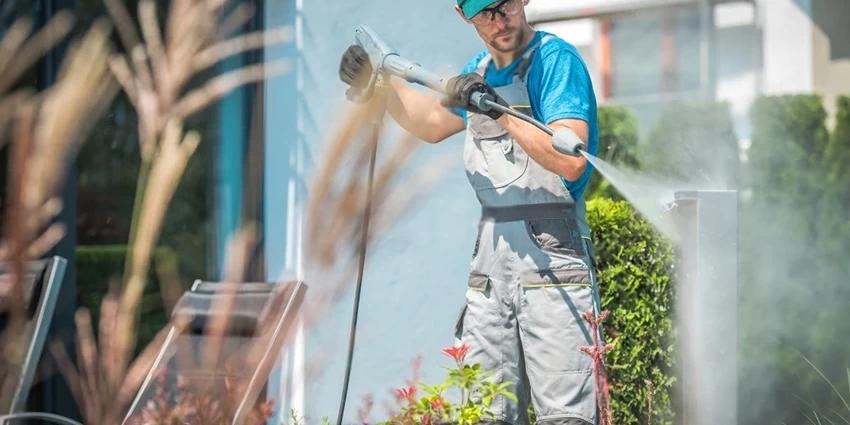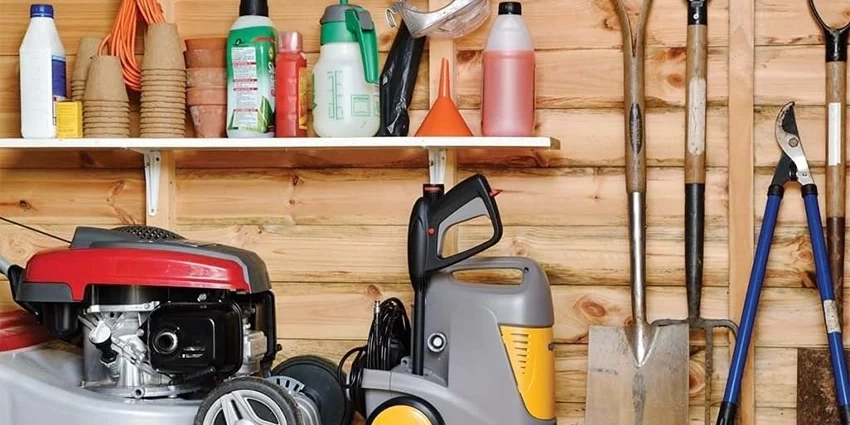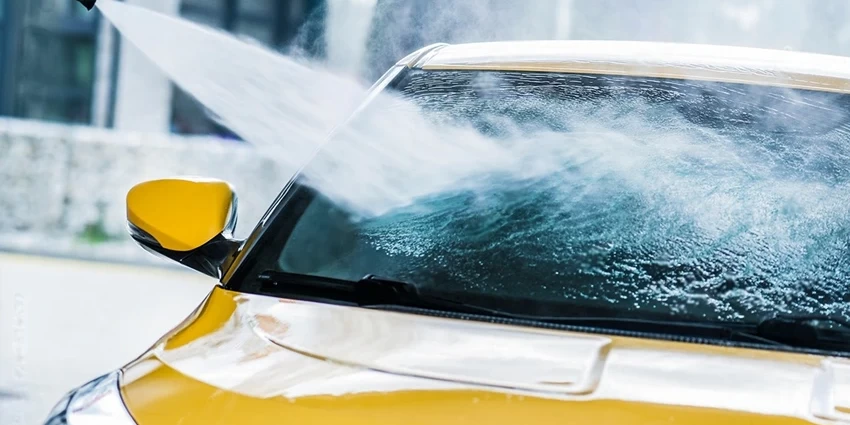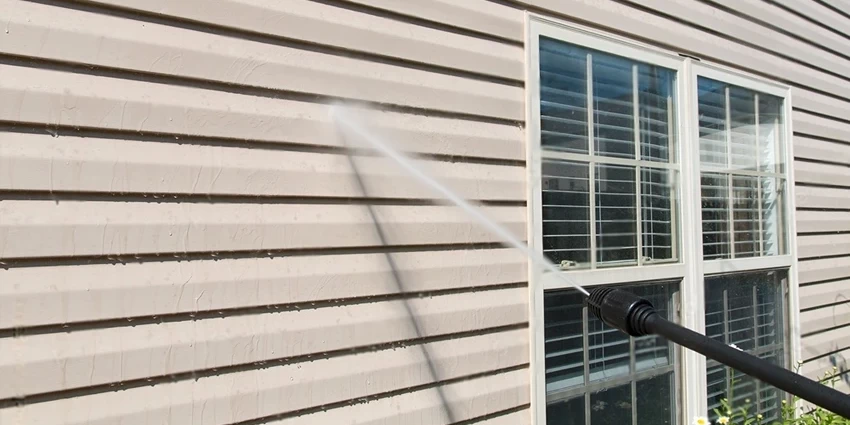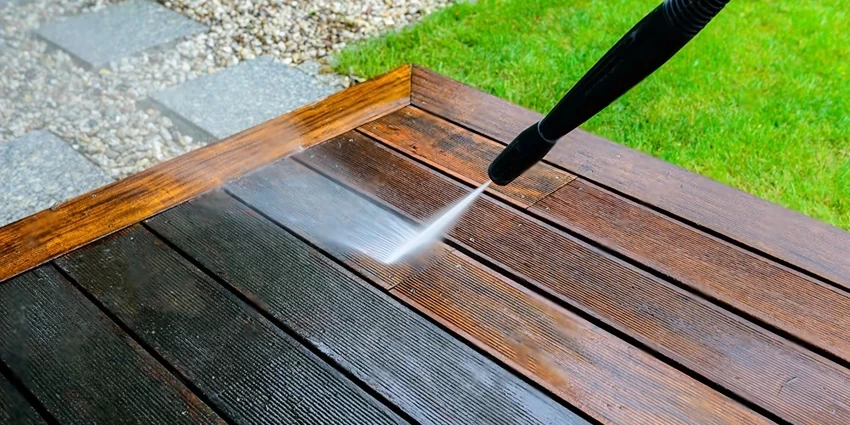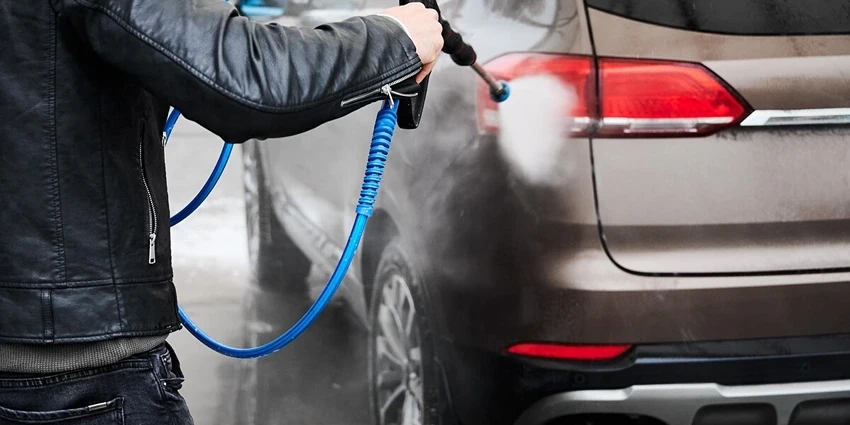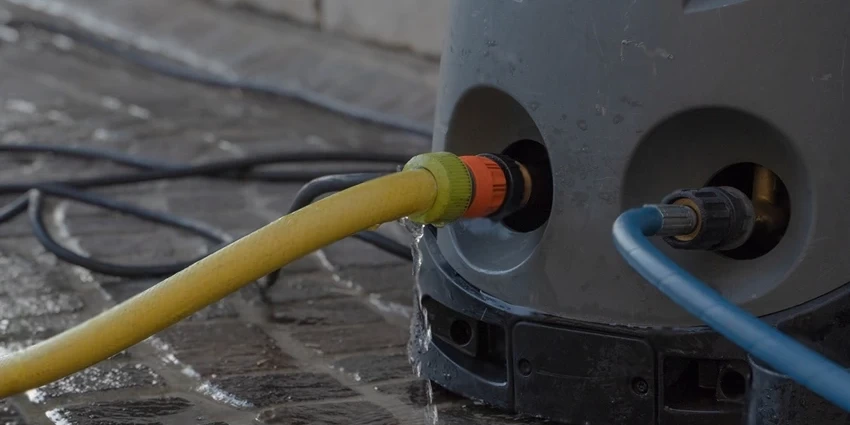All products were chosen independently by our editorial team. This review contains affiliate links and we may receive a commission for purchases made. Please read our affiliates FAQ page to find out more.
Home » Pressure Washing » Safe Pressure Washing
Pressure washing is a powerful tool in the cleaning arsenal, whether you’re blasting away years of grime from a patio or giving your car that showroom shine. However, with great power comes great responsibility. Safety in pressure washing is paramount, not just to protect yourself but also the surfaces you’re cleaning and the environment around you.
Key Takeaways:
- Understanding Pressure Washing: Learn the basics and importance of safe pressure washing.
- Types of Pressure Washers: Differences between electric, gas-powered, hot, and cold water pressure washers.
- Safe Operation of Pressure Washers: How to prepare and choose the right equipment.
- Personal Protective Equipment (PPE): Essential gear for safe pressure washing.
Understanding Pressure Washing
Pressure washing uses high-pressure water spray to remove loose paint, mould, grime, dust, mud, and dirt from surfaces and objects such as buildings, vehicles, and concrete surfaces. The effectiveness of this cleaning method lies in its ability to clean deeply without the need for harsh chemicals or scrubbing. However, the very pressure that makes it so effective can also pose significant risks if not handled correctly.

Types of Pressure Washers
When it comes to pressure washers, there’s no one-size-fits-all. Choosing the right type depends on your specific cleaning needs, from the gentle touch needed for a vintage car to the robust power required for concrete driveways. More info on pressure washers can be found on our guide.
Electric vs. Gas-powered Pressure Washers
| Feature | Electric Pressure Washers | Gas-powered Pressure Washers |
| Power Source | Electricity | Gasoline |
| Noise Level | Lower | Higher |
| Mobility | Limited by cord length | Highly mobile |
| Maintenance | Less maintenance | Requires regular maintenance |
| Use | Ideal for small, indoor or residential tasks | Best for outdoor, commercial, or heavy-duty tasks |
Hot Water vs. Cold Water Pressure Washers
| Feature | Hot Water Pressure Washers | Cold Water Pressure Washers |
| Cleaning Efficiency | Higher (effective against oil and grease) | Lower |
| Cost | More expensive | More affordable |
| Portability | Less portable due to heating components | More portable |
| Use | Industrial and tough grime situations | General cleaning tasks |
Safe Operation of Pressure Washers
Before you start pressure washing, it’s crucial to prepare and understand how to operate your equipment safely. This begins with selecting the right pressure washer for the job and extends to regular maintenance and understanding your machine’s specific features.
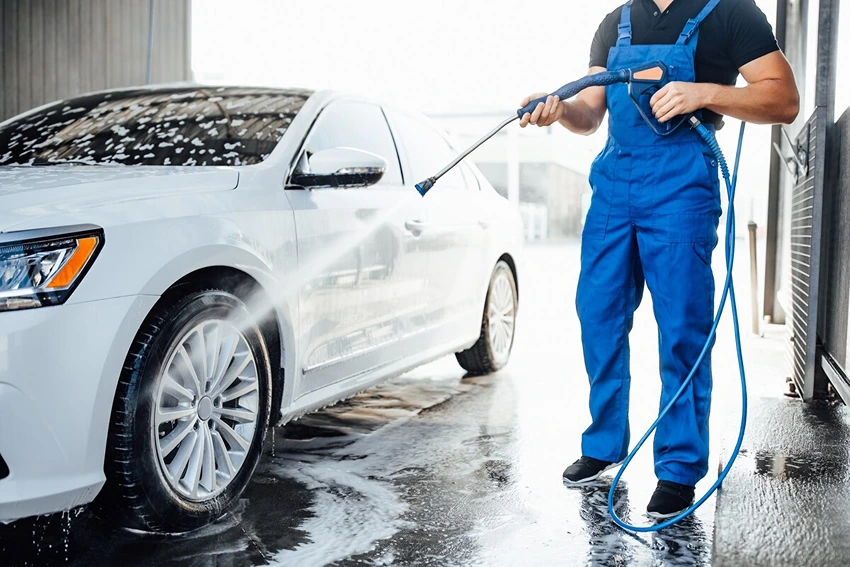
Preparing for Pressure Washing
Choosing the right pressure washer involves more than just picking the most powerful model. Consider the cleaning tasks at hand and select a washer that matches the pressure and water flow you need without overdoing it. Pre-use checks, such as inspecting the hose for cracks or leaks, ensuring connections are secure, and checking the machine for any signs of wear or damage, are essential steps to ensure safety and efficiency.
Personal Protective Equipment (PPE)
Wearing the right PPE can significantly reduce the risk of injury when using a pressure washer. Here’s a quick guide to the essential gear:
| PPE | Importance |
| Safety goggles | Protects eyes from flying debris |
| Durable gloves | Protects hands and improves grip |
| Ear protection (for gas models) | Prevents hearing damage from noise |
| Closed-toe, steel-toe boots | Protects feet from high-pressure water and falling objects |
| Long pants | Shields legs from debris and water spray |
Safety goggles and durable gloves are non-negotiables, protecting your most vulnerable areas from high-speed debris. Ear protection becomes crucial with gas-powered models, known for their loud operation. Closed-toe, steel-toe boots and long pants offer a physical barrier against the high-pressure spray, safeguarding your skin from potential injuries.
In the realm of pressure washing, safety and preparation are as critical as the cleaning itself. By understanding the types of pressure washers available and selecting the right one for your needs, you can tackle cleaning tasks more effectively. Equally, by adhering to safety guidelines and wearing appropriate personal protective equipment, you can ensure that your pressure washing not only achieves sparkling results but does so without compromising on safety.

Operating Pressure Washers Safely
Operating a pressure washer safely is about more than just turning on a machine and pointing the nozzle. It requires awareness, preparation, and understanding the potential risks involved. Firstly, always ensure the area you’re working in is clear of obstacles and hazards that could cause slips or trips. This includes securing loose objects that might be dislodged by the force of the water.
Secondly, be mindful of the surface you’re cleaning. Different materials require different pressure settings and nozzles to avoid damage. For instance, a delicate wood deck will need a much gentler approach than a concrete driveway.
| Surface Type | Recommended Pressure (PSI) | Nozzle Type |
| Wood Deck | 500-600 | 40-degree |
| Concrete | 3000 | 15-degree |
| Cars | 700-900 | 40-degree |
| Siding | 1500-2000 | 25-degree |
Handling Chemicals and Detergents
When using chemicals or detergents with your pressure washer, it’s crucial to choose products designed for pressure washer use. These are typically biodegradable and safe for outdoor use, minimising environmental impact. Always wear gloves and goggles when handling chemicals, and follow the manufacturer’s instructions for dilution and application.
Remember, the goal is to enhance your cleaning power without harming your health or the environment. Opt for detergents that are as effective as they are eco-friendly, ensuring you’re not leaving a toxic footprint behind.
| Chemical Type | Use Case | Eco-Friendly Option |
| Degreasers | Driveways, garages | Yes |
| Vehicle Wash | Cars, boats | Yes |
| Wood Cleaners | Decks, fences | Yes |
| All-purpose | General cleaning | Yes |
Pressure Washing in Different Environments
Adapting your pressure washing technique to suit different environments is key to both safety and effectiveness. Indoor spaces, like garages, require adequate ventilation to prevent the buildup of fumes, especially when using gas-powered models. For outdoor areas, be mindful of water runoff, ensuring it doesn’t carry detergents or debris into waterways.
In residential areas, be considerate of your neighbours by controlling noise and water spray. For commercial settings, safety signage and barriers are essential to protect passersby and comply with health and safety regulations.

| Environment | Considerations | Safety Measures |
| Indoor | Ventilation, fume buildup | Electric models, open doors/windows |
| Outdoor | Runoff, environmental impact | Biodegradable detergents, containment |
| Residential | Noise, water spray | Timely operations, notify neighbours |
| Commercial | Public safety, regulations | Signage, barriers, professional equipment |
Register for our latest in-depth reviews and product round-ups from the experts.
Enter your email address below to receive our monthly review emails.
By entering your details, you are agreeing to our terms and conditions and privacy policy. You can unsubscribe at any time.
Frequently Asked Questions
Aim for a pressure setting between 700-900 PSI and use a 40-degree nozzle to prevent damage to the paintwork.
Never point the pressure washer at yourself or others, and always use the safety latch when not actively spraying.
While it’s technically possible, it’s not recommended due to the increased risk of electric shock and reduced visibility.
A passionate plant enthusiast on a mission to turn every space into a blooming haven. With a love for all things botanical, I'm your gardening guide, sharing quick tips, the joy of nurturing plants, and the belief that every day is a great day to garden. Join me in cultivating a thriving garden paradise—we'll sow, grow, and flourish together in this green revolution!


